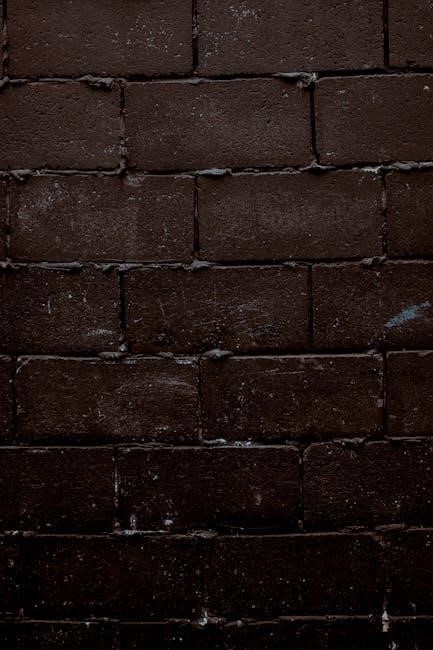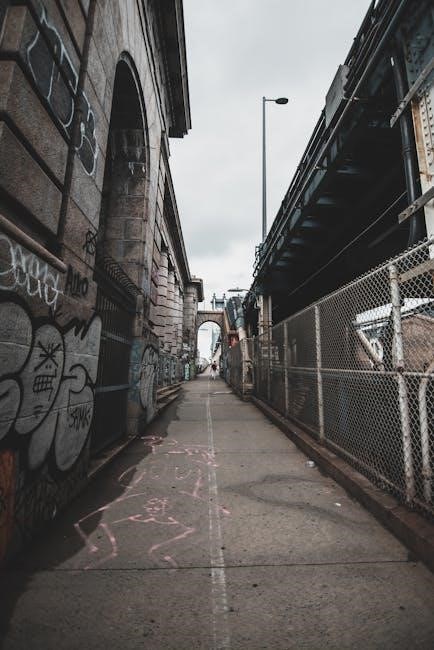RelyX Veneer Cement is a permanent, light-cure resin luting material designed for aesthetic and durable bonding of veneers․ It offers excellent shade matching and easy handling․
1․1 Key Features and Benefits
RelyX Veneer Cement offers excellent aesthetic results with its shade-matched formulas, ensuring natural-looking restorations․ It is a light-cure-only material, requiring polymerization in the 400-500 nm wavelength range for optimal bonding․ Designed for use with 3M adhesive systems, it provides strong and durable adhesion․ The cement is easy to handle, with a smooth consistency for precise application․ Optional priming enhances bonding efficiency, while its compatibility with Scotchbond Etchant ensures a clean, prepared surface․ Available in multiple shades, RelyX Veneer Cement supports aesthetic matching, making it ideal for veneer applications․ Its straightforward instructions and reliable performance make it a preferred choice for dental professionals․
Preparation for Veneer Cement Application
Clean the bonding surface with Scotchbond Etchant for 15 seconds, rinse thoroughly, and dry․ This ensures proper surface preparation for optimal bonding․
2․1 Cleaning and Priming the Bonding Surface
Cleaning and priming are critical steps for ensuring a strong bond․ Use Scotchbond Etchant (35% phosphoric acid) on the bonding surface for 15 seconds, then rinse thoroughly and dry․ This process removes contaminants and creates microretentions for better adhesion․ Apply a single coat of RelyX primer to the prepared surface, ensuring even coverage without pooling․ Allow the primer to set according to the product instructions․ Proper cleaning and priming enhance the bonding efficiency and durability of the veneer cement, ensuring a long-lasting and aesthetic result․

Tooth and Veneer Preparation
Tooth and veneer preparation involves ensuring proper fit and cleanliness․ The veneer restoration must be complete, with the tooth surface ready for bonding․ This step is essential for a successful outcome․
3․1 Ensuring Proper Fit and Cleanliness
Ensuring proper fit and cleanliness is crucial for successful veneer placement․ Clean the bonding surface using Scotchbond Etchant (35% phosphoric acid) for 15 seconds, rinse, and dry thoroughly․ Apply a single coat of RelyX primer to the veneer’s bonding surface for optimal adhesion․ Handle the veneer carefully to avoid contamination․ Verify the veneer’s fit by gently seating it on the tooth, ensuring it matches the tooth contours precisely; Any adjustments should be made before final placement․ Proper cleanliness prevents contamination, ensuring a strong and durable bond․ This step is essential for the long-term success of the veneer placement․
Shade Selection and Aesthetic Matching
Shade selection is critical for achieving natural aesthetics․ Use RelyX Try-In Paste to test shades and ensure the veneer matches surrounding teeth seamlessly before final placement․
4․1 Using RelyX Try-In Paste for Optimal Results
The RelyX Try-In Paste is an essential tool for achieving precise shade matching․ Apply a small amount to the veneer and temporarily seat it to assess color accuracy․ This step allows for easy adjustments before final cementation, ensuring a natural and aesthetically pleasing result․ The paste is removable, making it ideal for trial without compromising the bonding surface․ Proper use ensures the veneer blends seamlessly with adjacent teeth, enhancing both functionality and appearance․ Always follow the manufacturer’s instructions for application and removal to maintain optimal outcomes․

Application of RelyX Veneer Cement
Apply RelyX Veneer Cement evenly, ensuring full coverage․ Seat the veneer with gentle pressure, then spot cure on the facial surface away from margins for optimal bonding․
5․1 Handling and Seating the Veneer
Handle the veneer with care to avoid contamination․ Apply RelyX Veneer Cement evenly, ensuring full coverage․ Seat the veneer using gentle pressure to align properly․ Spot cure the veneer on the facial surface, away from margins, to secure it in place․ Use light pressure to adapt the cement, ensuring no excess material remains․ Light-cure for the recommended duration, typically within the 400-500 nm wavelength range․ Avoid curing directly over margins to prevent unwanted bonding․ Proper handling and seating are critical for a durable and aesthetically pleasing result․
Curing Process for RelyX Veneer Cement
RelyX Veneer Cement requires polymerization via visible light in the 400-500 nm wavelength range․ Follow the recommended curing time and intensity for optimal bonding results․
6․1 Light-Curing Requirements and Techniques
RelyX Veneer Cement requires light-curing with a visible light source in the 400-500 nm wavelength range․ Use a high-intensity curing light to ensure proper polymerization․ Begin by spot-curing the facial surface away from the margins for 2-3 seconds․ Then, cure each surface for 20 seconds, following the manufacturer’s recommended curing time․ Avoid direct light exposure to the margins to prevent over-curing․ Proper light-curing ensures a strong and durable bond, enhancing the longevity of the veneer restoration․

Safety and Handling Guidelines
Handle RelyX Veneer Cement with gloves to avoid skin contact․ Avoid eye exposure, as it may cause irritation․ Use in a well-ventilated area and follow disposal regulations․
7․1 Precautions and Disposal Recommendations
Handle RelyX Veneer Cement with care, wearing gloves to prevent skin irritation․ Avoid eye contact, as it may cause discomfort․ Use in a well-ventilated area to minimize inhalation of vapors․ Dispose of unused material and packaging according to local regulations and environmental guidelines․ Do not dispose of product down drains or sewers․ Refer to the Safety Data Sheet (SDS) for detailed handling and disposal instructions․ Ensure proper storage in a cool, dry place, away from direct sunlight․ Expired products should not be used and must be disposed of appropriately․ Always follow 3M’s safety guidelines for dental materials․
Troubleshooting Common Issues
Common issues include bonding failures or excess cement․ Address by ensuring proper surface preparation, using RelyX Try-In Paste, and adjusting curing techniques for optimal results․
8․1 Addressing Bonding or Curing Problems
Common bonding issues include incomplete curing or weak adhesion․ Ensure proper surface preparation, such as cleaning and priming, for optimal bonding․ Excess cement can be removed with scalpels or burs․ If curing problems occur, verify light intensity and duration․ Always use RelyX Veneer Cement with compatible 3M adhesive systems․ For bonding failures, re-prepare the surface and reapply primer․ Follow instructions for Scotchbond Etchant and RelyX application․ Proper handling and seating of veneers are critical to avoid excess material․ Consult the product’s safety data sheets for disposal guidelines and precautions․ Addressing these issues ensures a durable and aesthetically pleasing outcome․ Always refer to the product’s instructions for specific troubleshooting steps․
Final inspection ensures RelyX Veneer Cement bonds are durable and aesthetically pleasing․ Verify proper fit, margins, and occlusion for long-term success․
9․1 Ensuring Long-Term Durability and Aesthetics
To ensure long-term durability and aesthetics, verify proper fit, margins, and occlusion․ Check shade matching for natural appearance․ Ensure the cement is fully cured and excess removed․ Monitor for any signs of wear or degradation during follow-ups․ Proper patient maintenance, including good oral hygiene, is crucial․ The biocompatible properties of RelyX Veneer Cement support gingival health․ Regular dental check-ups help maintain the restoration’s integrity and aesthetics․ By following these steps, you can ensure a successful and long-lasting outcome for your patients․